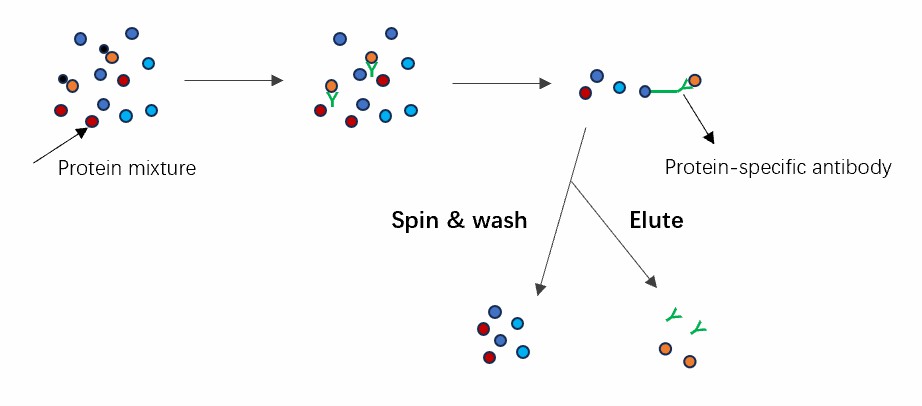Telomere-binding proteins have recently been recognized not only as necessary building blocks of telomere structure but also as components that are of central importance to telomere metabolism, being involved in the regulation of telomere length as well as in the protective (capping) function of telomeres. Analyzing plant telomere-binding proteins is essential for understanding their function and the mechanisms underlying telomere biology in plants.
At Lifeasible, we offer a comprehensive range of services for analyzing plant telomere-binding proteins using advanced techniques such as pulldown assay, chromatin Immunoprecipitation, and co-immunoprecipitation. Our team of highly skilled experts possesses extensive experience in studying telomere biology and can provide reliable and accurate results.
 Fig. 1 Schematic diagram of the Co-IP principle.
Fig. 1 Schematic diagram of the Co-IP principle.
By choosing Lifeasible for analyzing plant telomere-binding proteins, you can benefit from our expertise and personalized support throughout the entire analysis process. If you are interested in our services or have some questions, please feel free to contact us or make an online inquiry.
Lifeasible has established a one-stop service platform for plants. In addition to obtaining customized solutions for plant genetic engineering, customers can also conduct follow-up analysis and research on plants through our analysis platform. The analytical services we provide include but are not limited to the following:
Why Do Plants Blush When They Are Hungry?
April 26, 2024
STU-CRISPR System Improves Plant Genome Editing Efficiency
April 19, 2024